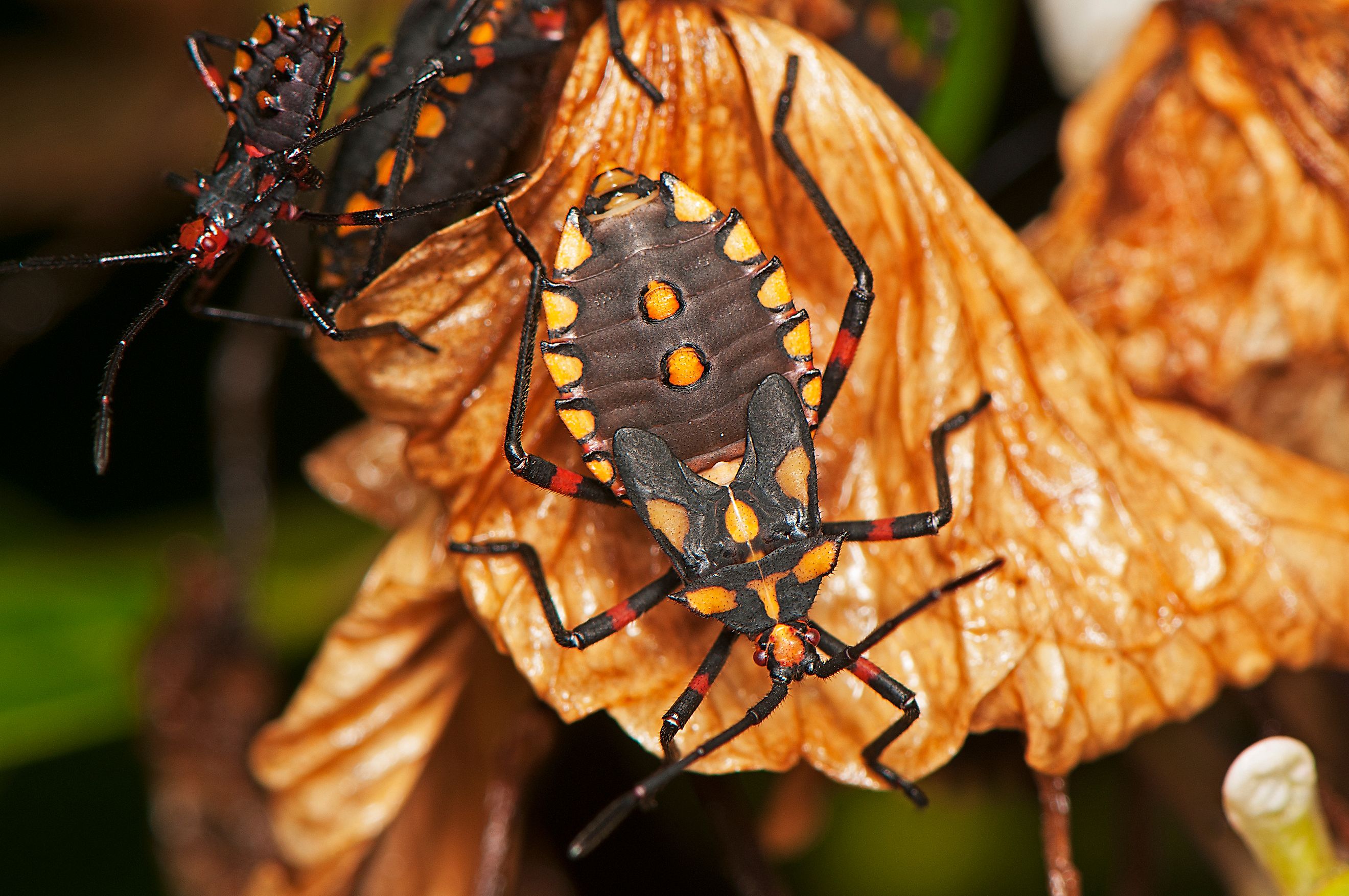
5 Most Dangerous Insects in South Carolina
South Carolina’s often warm and humid climate makes it a thriving habitat for many creatures, some of which pose significant risks to humans and animals. From venomous waps to disease-carrying pests, the insects that inhabit this southern state can inflict painful bites, transmit harmful illnesses, or cause allergic reactions to both humans and other animals.
Awareness of these dangerous species is crucial for minimizing encounters and protecting your health. Here, we will highlight some of the most hazardous insects in South Carolina, detailing their behaviors, risks, and tips for avoiding them.
Mosquitoes

Mosquitoes are one of the most common and dangerous insects in South Carolina, particularly in its warm, water-rich environments. Species like Aedes aegypti and Culex mosquitoes thrive in these regions of the state, especially during the summer months. Female mosquitoes feed on blood, which is necessary for egg production, while the male mosquito primarily feeds on nectar.
These annoying insects are best known for their ability to transmit diseases, including the West Nile virus and the Eastern equine encephalitis (EEE).
Mosquito bites typically cause itching, redness, and swelling, but the real danger lies in the diseases they can spread. West Nile virus and EEE, though rare, can lead to serious neurological issues, especially in young children, the elderly, and individuals with weak immune systems.
Kissing Bugs

Kissing bugs are blood-feeding insects found in parts of South Carolina, particularly in rural and suburban areas. They are known for their tendency to bite humans on the face, especially around the mouth or eyes, earning them the nickname "kissing bugs."
These insects are nocturnal and are most active during the night when they seek out sleeping hosts to feed on. Their bites are generally painless, which makes them difficult to detect until symptoms appear.
What makes kissing bugs dangerous is their ability to transmit Trypanosoma cruzi, the parasite that causes Chagas disease. While not all kissing bugs carry the parasite, the risk of infection is a significant concern. Chagas disease can lead to long-term health problems, including heart and digestive issues if left untreated.
Fire Ants

Fire ants are gathering on the tree cuttings.
Fire ants are a highly aggressive species commonly found throughout South Carolina, particularly in warm, open areas like lawns, parks, and gardens. These ants are easily identified by their reddish-brown color and their painful sting.
When disturbed, fire ants can swarm aggressively, biting and stinging multiple times to defend their nests. Their stings inject venom, which can cause intense burning, itching, and swelling. In some cases, allergic reactions can lead to more severe symptoms, including anaphylaxis, which could be deadly.
Fire ants create large, visible mounds in the ground, which serve as their nests. They can be particularly dangerous to curious small children, pets, and individuals allergic to insect stings. The stings may also lead to secondary infections if the site is scratched or not treated properly.
Controlling fire ant populations requires targeted measures, including the use of bait and insecticides specifically formulated for fire ants.
Yellow Jacket Wasps

Yellow Jacket Hive.
Yellow jacket wasps are among South Carolina's most dangerous insects due to their aggressive behavior and painful stings. Found throughout the state, these highly social insects build nests underground, in tree hollows, or within wall cavities. Disturbing a nest can provoke a swarm, as yellow jackets have a habit of fiercely defending their colonies.
Unlike bees, yellow jackets can sting repeatedly, injecting venom that causes sharp pain, swelling, and possible allergic reactions for some. For individuals allergic to their venom, a sting can lead to anaphylaxis, a life-threatening condition requiring immediate medical attention.
Yellow jackets are particularly active in late summer and early fall, scavenging primarily for sugary foods. To avoid these flying insects, try not to wear bright colors outdoors and keep food and drinks covered during picnics or barbecues.
Paper Wasps

Paper wasps, another common species in South Carolina, are dangerous due to their ability to deliver repeated, painful stings when threatened. These wasps construct distinctive nests from wood fibers, often found under eaves, decks, and tree branches. They can mainly be found along South Carolina's coastal regions.
While not as aggressive as yellow jackets, paper wasps will defend their nest if disturbed. A paper wasp sting injects venom that causes localized pain, swelling, and itching. For those with allergies, a sting can trigger severe reactions, including anaphylaxis.
Paper wasps are most active during warmer months, especially when they are in the process of constructing their nests.
Just like with yellow jackets, properly securing food and drinks outdoors can also deter these insects in South Carolina.
Better Understand the Insects that Live in South Carolina
Better understanding these dangerous insects in South Carolina is key to staying safe both while in your home and enjoying the state’s abundant natural beauty. From the venomous stings of wasps to the disease risks posed by mosquitoes and kissing bugs, these insects require vigilance and preventive measures.
Regular maintenance of spaces in and around your home, use of protective clothing, and prompt medical attention for bites or stings can significantly reduce danger to your health. Awareness is the first step toward effective protection of both yourself and the ecosystem these creatures call home.











